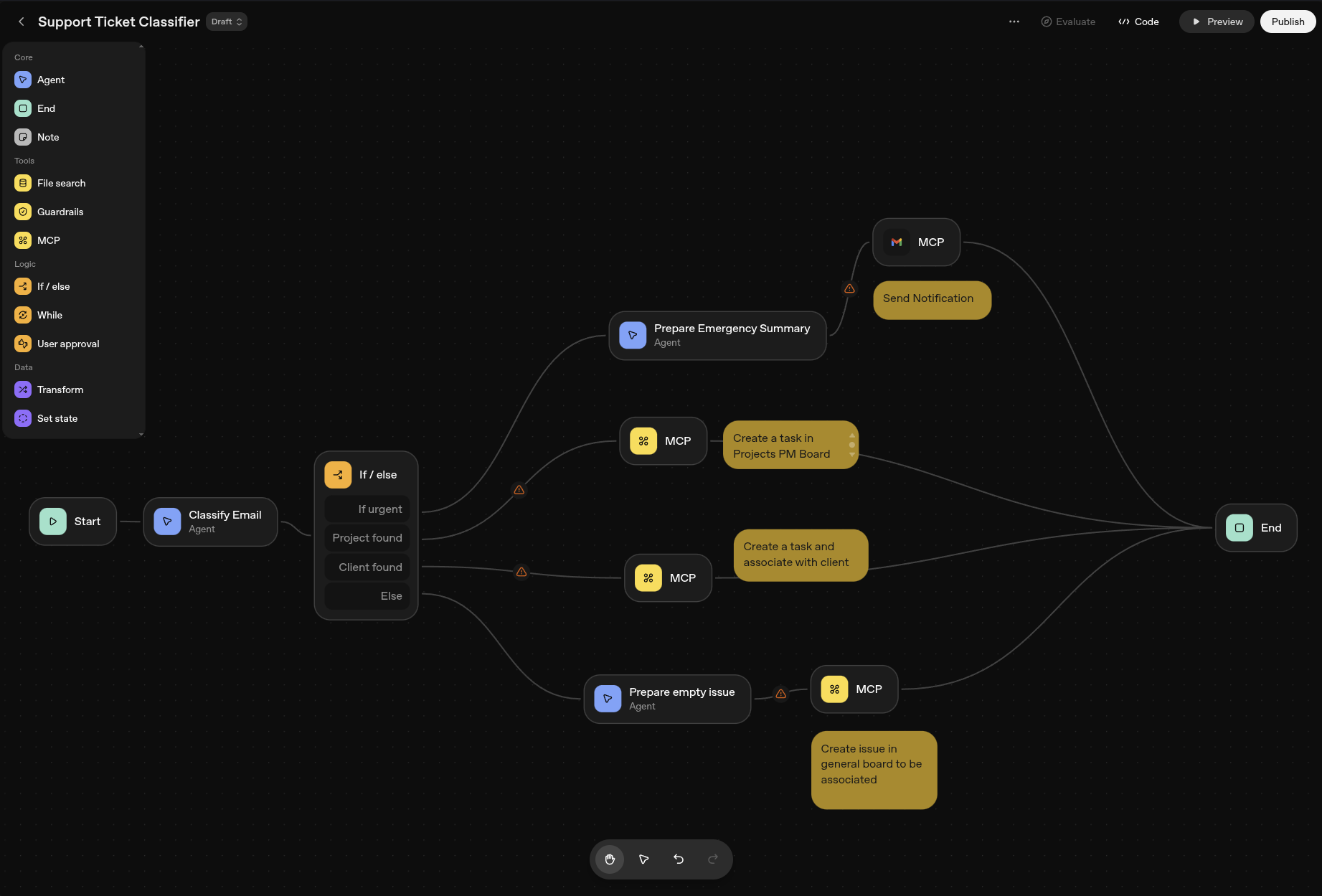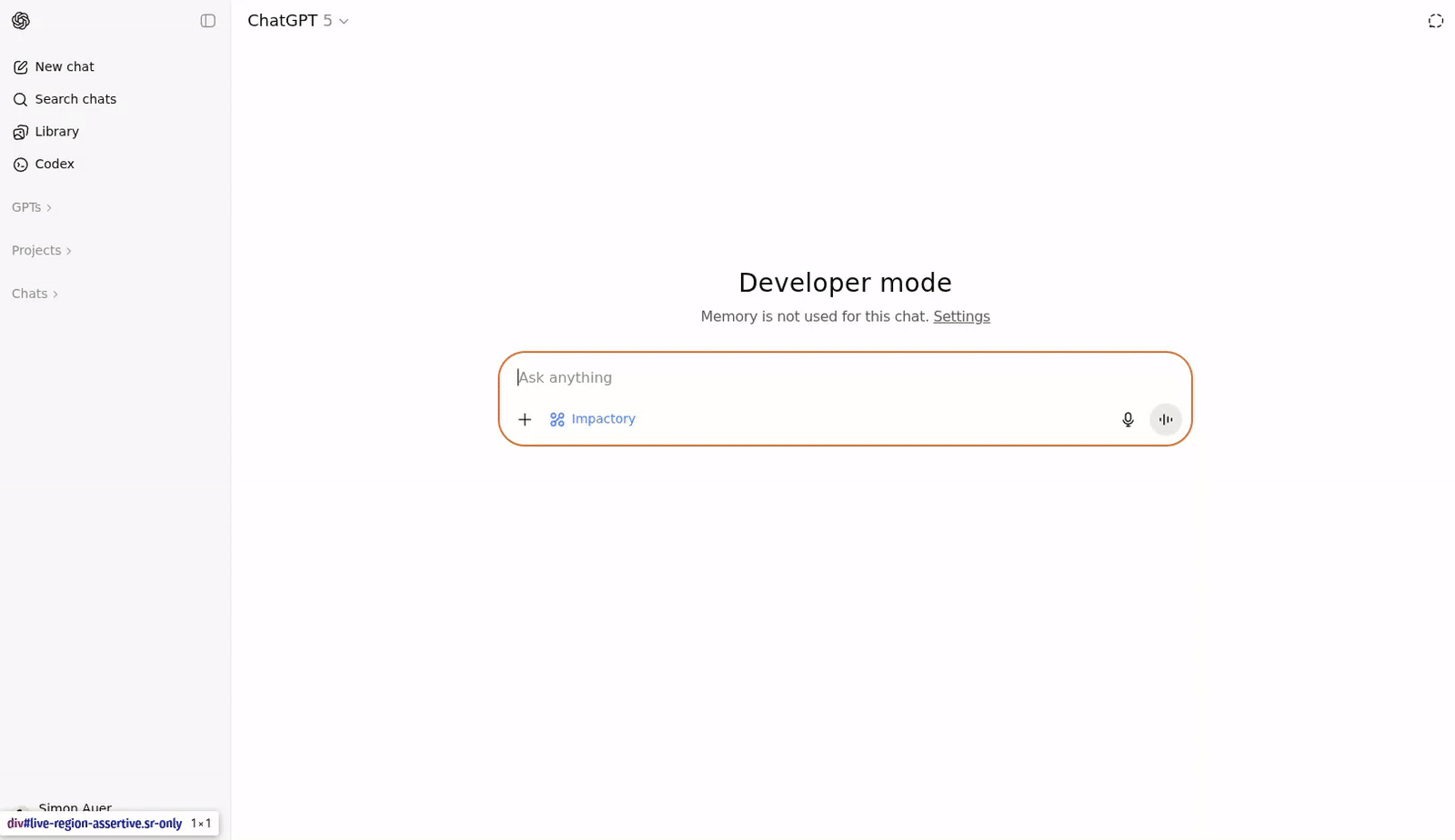Artificial Intelligence is entering a new phase — one where it doesn’t just talk but actually acts and shows.
OpenAI’s recent releases — ChatGPT AgentKit and the ChatGPT Apps SDK — mark a shift from conversation to interaction, from Q&A to execution and experience.
Here we’ll explore what these tools really do, how to utilize them, where the limits are, and why we feel they are among the most exciting developments for bringing AI into day-to-day workflows and digital products.
The ChatGPT AgentKit is OpenAI’s latest developer platform that allows you to build, deploy, and scale agents connected directly to your data, APIs, and business flows.
Think of it as Zapier with reasoning and memory — but embedded right inside ChatGPT.
It enables contextual automation: an AI agent that doesn’t just execute a command, but understands why and when to do it.
For instance, instead of sending every report update, it could reason:
“This data hasn’t changed significantly since yesterday — I’ll wait until tomorrow unless the deviation crosses a threshold.”
That’s what AgentKit differs from: it brings judgment to automation.

While AgentKit is concerned with logic and action, the ChatGPT Apps SDK is concerned with presentation and interaction.
It allows developers to incorporate interactive mini apps — dashboards, widgets, forms, or visual results — inside ChatGPT conversations.
These apps are built using OpenAI’s Model Context Protocol (MCP) — an open standard that could soon enable cross-platform compatibility with other assistants like Gemini or Anthropic’s Claude.
Apps don’t just talk — they show. And that turns ChatGPT into a full interface for both internal tools and public-facing content.

Used together, AgentKit and Apps SDK can form the backbone of real, intelligent digital ecosystems:
Below, here, we offer some “idea case studies” of how this could play out in the real world — from the corporate office to customer-facing apps.
Issue:
Every big organization has siloed customer information — CRM records, support tickets, meeting notes, contracts, and marketing emails are all in separate tools.
Sales reps waste hours switching between systems just to get the full picture before reaching out to a client.
Solution:
A ChatGPT-powered CRM Agent, built using AgentKit, would be able to search all these systems and build a full picture of the client in a blink of an eye:
Then, an App SDK-powered interface could chart this in a neat panel directly in ChatGPT — a “Customer Snapshot” with one-click choices:
→ Build a follow-up email from notes in their own words
→ Suggest next contact date based on probability of renewal
→ Top 3 conversation points to discuss before a meeting
The same platform would even include a Legal Query Agent, pulling relevant contract terms or NDAs based on what the salesperson is negotiating — securely and in context.
As of now with chatgpt this approach would need to be thought through carefully, because you probably don't to provide Chatgpt with all the information available about you and your clients, but we are sure, that on premise alternatives to agent kit will soon arrive and then this is a very good usecase.
Problem:
The majority of publishers, online stores, and local businesses are losing organic traffic as users shift from search engines to AI assistants such as ChatGPT.
Solution:
Using the ChatGPT Apps SDK, you may be able to build a GEO-based content app that appears when people ask location-related questions such as:
“What is happening in Berlin this weekend?”
“Where can I purchase your product locally?”
Your app could display structured data (promotions, store locations, events) in a visually engaging widget — directly within ChatGPT — with dynamic links to your own site for full details.
The AgentKit backend could handle freshness of the data, validating and enriching your CMS, CRM, or API feeds in real time.
This approach doesn’t replace SEO — it brings it to the conversational space.
You’re not just hoping ChatGPT cites you; you’re providing the content directly.
Problem:
New employees often struggle to find information scattered across wikis, chats, or outdated documents. IT and HR teams lose time answering the same questions repeatedly.
Solution:
An internal onboarding agent could:
With the Apps SDK, this could be done as an interactive aide inside corporate ChatGPT UI — showing links, images, or one-click actions (e.g., “Create my VPN account” or “Order my hardware”).
The agent may even check on progress: “You’ve completed 8/10 steps on your onboarding process. Should I request system access for your follow-up project?”
Problem:
In production, logistics, and IT operations, internal problem reports typically take hours to route to the right person. Minor issues spiral out of control because no one knows who should do the fix.
Solution:
A Troubleshooter Agent built with AgentKit can be utilized to monitor issue reports and chat messages between platforms like Jira, Slack, and internal ticket systems.
On new issue arrival, it can:
A colleague Troubleshooter App (Apps SDK) would show the complete context visually:
a timeline of what happened, suggested solutions, and responsible teams — all in ChatGPT.
Not only is it time-saving, but it also builds a searchable knowledge base because agents learn from successful fixes over time.
Each of these examples illustrates how ChatGPT’s new ecosystem transcends text generation to become a genuine business integration platform — reasoning, automating, and presenting in a single loop.
We think the most thrilling aspect is not so much what’s available today, but what comes next: how these capabilities can be adapted to each organization’s own workflows, data, and user experiences.
We’re already experimenting with these ideas for innovative clients and would love to explore how ChatGPT AgentKit and Apps SDK could enhance your processes — whether internal, customer-facing, or entirely new digital products.
Both are in preview — but that’s exactly when it’s smartest to start experimenting.
ChatGPT’s new AgentKit and Apps SDK push AI beyond conversation into collaboration.
They let businesses turn ChatGPT into both a workflow orchestrator and a visual interface.
If you’re curious about how these tools could enhance your product, workflows, or digital visibility, we’d love to talk.
Early experimentation today means you’ll be ready when the ecosystem goes fully live tomorrow
